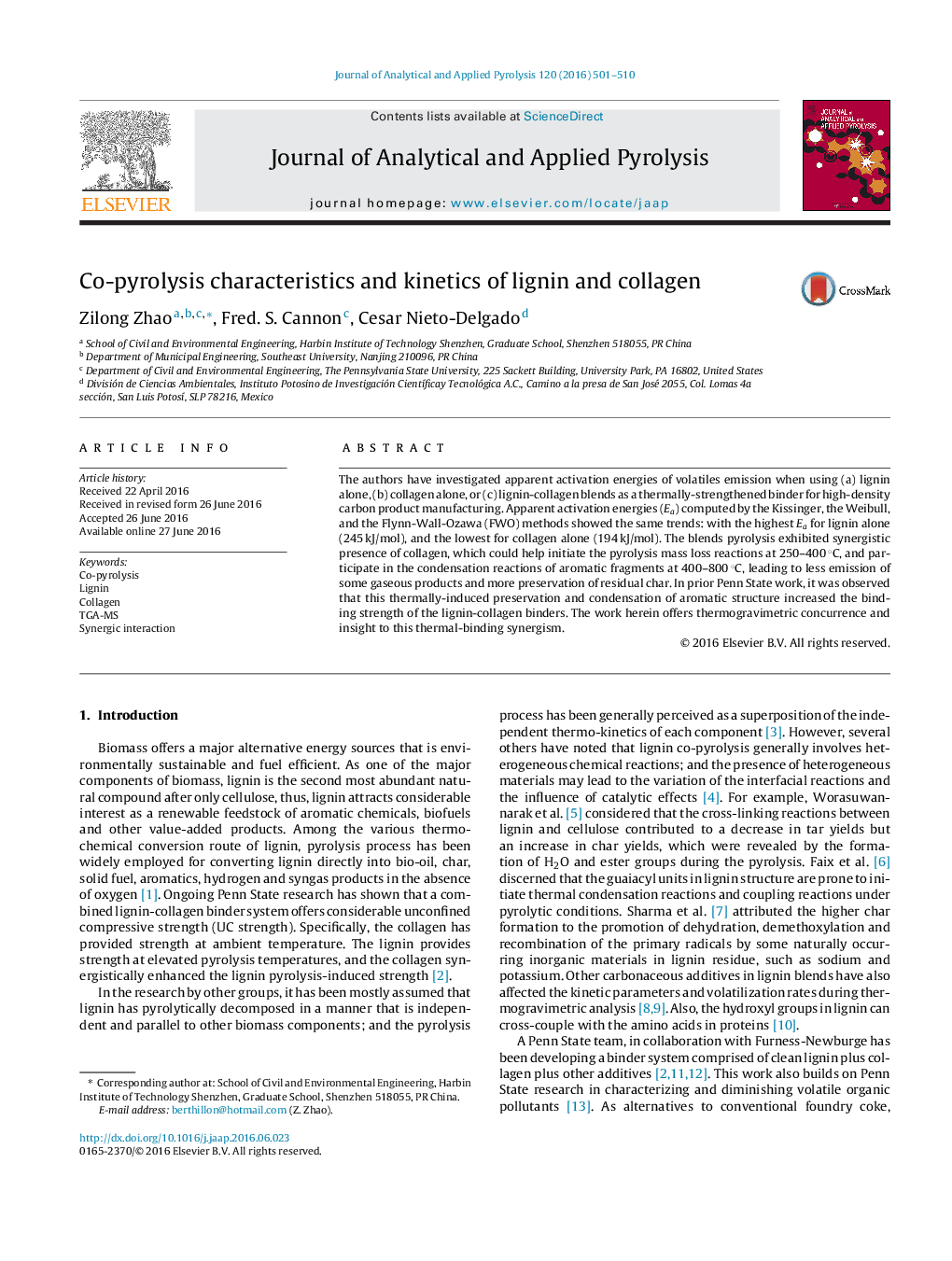| Article ID | Journal | Published Year | Pages | File Type |
|---|---|---|---|---|
| 1196578 | Journal of Analytical and Applied Pyrolysis | 2016 | 10 Pages |
•Higher char yield of lignin-collagen blends was obtained in a particular proportion.•Apparent activation energies for lignin-collagen blends were obtained and their changes presented four stages.•Evolution of gaseous products produced by lignin-collagen blends was compared with that from pure lignin, or pure collagen.•Synergic pyrolysis interactions between lignin and collagen were observed.
The authors have investigated apparent activation energies of volatiles emission when using (a) lignin alone, (b) collagen alone, or (c) lignin-collagen blends as a thermally-strengthened binder for high-density carbon product manufacturing. Apparent activation energies (EaEa) computed by the Kissinger, the Weibull, and the Flynn-Wall-Ozawa (FWO) methods showed the same trends: with the highest EaEa for lignin alone (245 kJ/mol), and the lowest for collagen alone (194 kJ/mol). The blends pyrolysis exhibited synergistic presence of collagen, which could help initiate the pyrolysis mass loss reactions at 250–400 °C, and participate in the condensation reactions of aromatic fragments at 400–800 °C, leading to less emission of some gaseous products and more preservation of residual char. In prior Penn State work, it was observed that this thermally-induced preservation and condensation of aromatic structure increased the binding strength of the lignin-collagen binders. The work herein offers thermogravimetric concurrence and insight to this thermal-binding synergism.
